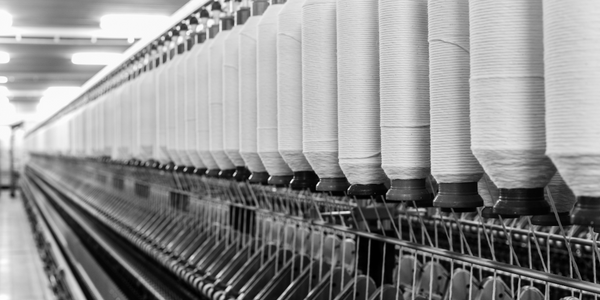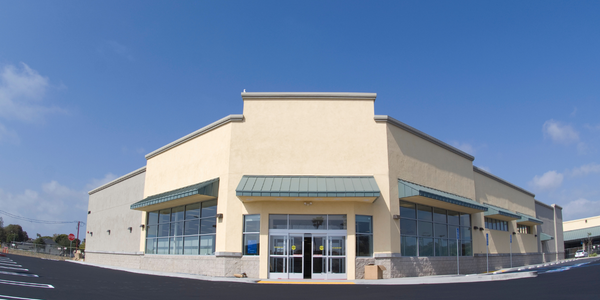Customer Company Size
Large Corporate
Country
- Worldwide
Product
- Blue Yonder’s sales and operations planning (S&OP) solution
Tech Stack
- Cloud
Implementation Scale
- Enterprise-wide Deployment
Impact Metrics
- Environmental Impact Reduction
- Productivity Improvements
Technology Category
- Platform as a Service (PaaS) - Application Development Platforms
Applicable Industries
- Apparel
Use Cases
- Supply Chain Visibility
Services
- Cloud Planning, Design & Implementation Services
About The Customer
Lenzing Group is a leading supplier of high-quality botanic cellulose fibers to the global fashion industry. The company is committed to sustainability and aims to minimize its environmental impacts. Lenzing targets sustainability via waste reduction, decreased emissions, fiber recycling, and other practices. The company is committed to becoming carbon-neutral by 2050 and is working to minimize the negative impacts of the entire value chain. Lenzing's commitment to sustainability is reflected in its efforts to increase end-to-end transparency, respond faster to exceptions, minimize environmental impacts, and improve collaboration.
The Challenge
Lenzing Group, a supplier of high-quality botanic cellulose fibers to the global fashion industry, is committed to sustainability. The fashion industry is responsible for 10% of global carbon emissions and 20% of the world’s waste water. Lenzing aims to minimize its environmental impacts and become carbon-neutral by 2050. However, the company lacked the transparency to achieve this goal. Five years ago, Lenzing was struggling with an uncontrolled propagation of Excel planning spreadsheets. The lack of transparency and agreement was a significant problem, especially across the fragmented, large, extended fashion supply chain. When conditions changed, it took Lenzing three or four months to respond, leading to significant environmental impacts such as waste from overproduction.
The Solution
Lenzing implemented Blue Yonder’s sales and operations planning (S&OP) solution, which enabled the company to take a boundaryless approach that connects the entire end-to-end supply chain via digitalization. This boundaryless planning model helps Lenzing quantify and control the carbon impacts associated with various steps in the value chain. The S&OP solution, delivered on the cloud, has delivered powerful results. Lenzing now has 24/7, boundaryless access to data and one version of the truth. They can plan and re-plan daily or weekly, as needed. Everyone can see exceptions like demand changes. Everyone’s actions are targeted toward adding value. The recipe for success that Lenzing put together with Blue Yonder is the typical S&OP process combined with sales and operations execution, or S&OE. In one set of numbers, they can plan and act in harmony. They can look at a one-, two- or 24-month horizon. They can see daily fluctuations and focus on their impacts for the plan. They can revise immediately if the market is hot, or if the market is down. And this is all done in one planning instance, using one set of truths.
Operational Impact
Quantitative Benefit

Case Study missing?
Start adding your own!
Register with your work email and create a new case study profile for your business.
Related Case Studies.

Case Study
Fire Alarm System and Remote Monitoring Sytem
Fire alarm systems are essential in providing an early warning in the event of fire. They help to save lives and protect property whilst also fulfilling the needs of insurance companies and government departments.Fire alarm systems typically consist of several inter-linked components, such as smoke detectors, heat detector, carbon monoxide, manual call points, sounders, alarm and buzzer. The fire alarm system should give immediate information in order to prevent the fire spread and protect live and property.To get maximum protection a shoe manufacturer in Indonesia opted for a new fire alarm system to monitor 13 production sites spread over 160 hectars. Although the company had an existing fire alarm system, it could not be monitored remotely.It was essential that the new system would be able to be monitored from a central control room. It needed to be able to connect to the existing smoke detector and manual call point. Information should be easily collected and passed on to the Supervisory Control and Data Acquisition (SCADA) system. Furthermore, the system should have several features such as alarm management, auto reporting, being connected to many client computers without additional cost, and run 24/7 without fails. The company also needed a system which could be implemented without changing the architecture of the existing fire alarm system.

Case Study
IoT Applications and Upgrades in Textile Plant
At any given time, the textile company’s manufacturing facility has up to 2,000 textile carts in use. These carts are pushed from room to room, carrying materials or semi-finished products. Previously, a paper with a hand-written description was attached to each cart. This traditional method of processing made product tracking extremely difficult. Additionally, making sure that every cart of materials or semi-finished products went to its correct processing work station was also a problem. Therefore, the company desired an intelligent solution for tracking assets at their factories. They also wanted a solution that would help them collect process data so they could improve their manufacturing efficiency.

Case Study
Retailer Uses RFID Scanner to Improve Efficiency
Patrizia Pepe wished to improve the logistics of their warehouse: accepting incoming goods from their production sites, movement of items throughout
the warehouse, and packaging of goods for distribution to the retail locations. They initially tried to use barcodes for this function. Because barcodes must be individually scanned within a line-of-sight, the acceptance of goods coming into the warehouse was too time consuming. Working with the University of Florence, Patrizia Pepe instituted a five-month pilot project beginning in August of 2009 to test the validity of an RFID solution. The pilot involved tagging of about 60,000 items for the second seasonal collection, and convinced the company to move forward with tagging all items.

Case Study
Monitoring and Controlling Automatic Mixing and Dispensing Machines
As technology advances, textile manufacturing has been transformed from a labor-intensive to a partially or fully automated industry. Automation is significant in all segments of textile production - from spinning to printing, and textile machinery manufacturers are constantly searching for new technologies and automation processes will increase the productivity of their machines. The color paste mixing and dispensing machine is an essential part of the printing and dyeing process. With the advantage of automatically computerized controls and database management, the system can significantly improve its dispensing precision, working efficiency and production quality as well as reducing material consumption.









